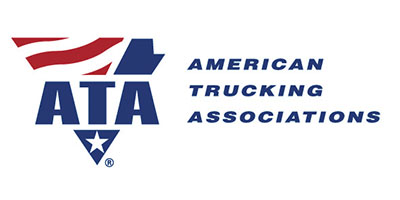Driver turnover rate gets back into higher gear in second quarter, reports ATA
A recent stretch of low motor carrier driver turnover rates appears to have come to an end, according to data issued this week by the American Trucking Associations (ATA).
A recent stretch of low motor carrier driver turnover rates appears to have come to an end, according to data issued this week by the American Trucking Associations (ATA).
While the fourth quarter of 2016 and the first quarter of 2016 showed signs of progress for motor carriers in their efforts to fill driver seats, an issue, which has plagued the sector for several year, the second quarter, the most recent quarter for which data is available, showed a return to higher turnover levels that have been more common especially in recent years, as the industry continues to struggle with driver turnover and filling seats.
For the second quarter, ATA reported that the annualized turnover rate for large truckload carriers with more than $30 million in revenue rose 16 percent to 90%, off of the first quarter’s 74%, which ATA said in July was at a “near historic” low point. The first quarter was up 3% over the 71% recorded during the fourth quarter of 2016.
And for smaller carriers, which ATA defines as fleets with less than $30 million in annual revenue, ATA said the turnover rate saw a 19% increase to 85% for its highest level since the first quarter of 2016. This dwarfs the second quarter’s 66%, which was down 22% annually, and was in line with the 64% recorded during the fourth quarter of 2016. The less-than-truckload turnover rate for the second quarter was down 1% to 9%, with the rate for local LTL drivers up 2% over the first quarter to 14% for its highest level going back to 2014. The turnover rate for LTL carriers is typically much lower than the rate for truckload carriers.
“We saw double digit gains in the annualized turnover rate for both small and large truckload fleets,” ATA Chief Economist Bob Costello said. “After a period of relatively low turnover, it appears the driver market is tightening again, which coupled with increased demand for freight movement, could rapidly exacerbate the driver shortage.”
The ATA executive previously said that ongoing softness in the freight economy contributed to an easing of the market for drivers and a reduced turnover rate, adding that at the end of the third quarter of 2016 there were indications that the end of the high inventory cycle may was in sight.
What’s more, he added if freight demand truly picks up and subsequently comes with increased demand for drivers and higher turnover rates, which will likely be back to the more familiar range of the mid-to-high 90 percent range, an unwelcome statistic to be sure, as it represents a “here we go (or are) again” type of scenario, with no clear end in sight for addressing the shortage and high turnover rates.
In October 2015, the ATA issued a landmark report, entitled “Truck Driver Analysis 2015,” whose chief findings cited how the current shortage of truck drivers now stands at almost 48,000 and has the potential to go higher, due in large part to industry growth and drivers parking their trucks on the way to retirement and also noting that if current trends remain intact, the driver shortage could rise to around 175,000 by 2024.
Even with an increased onus on augmenting driver training, retention, and compensation packages, many carriers are still struggling with how to fill the empty seats. The ongoing driver shortage still serves as a major factor for tight over the road capacity, which has been burdensome for shippers in that they need to pay higher rates in order to get their freight moved in a timely and efficient manner.













